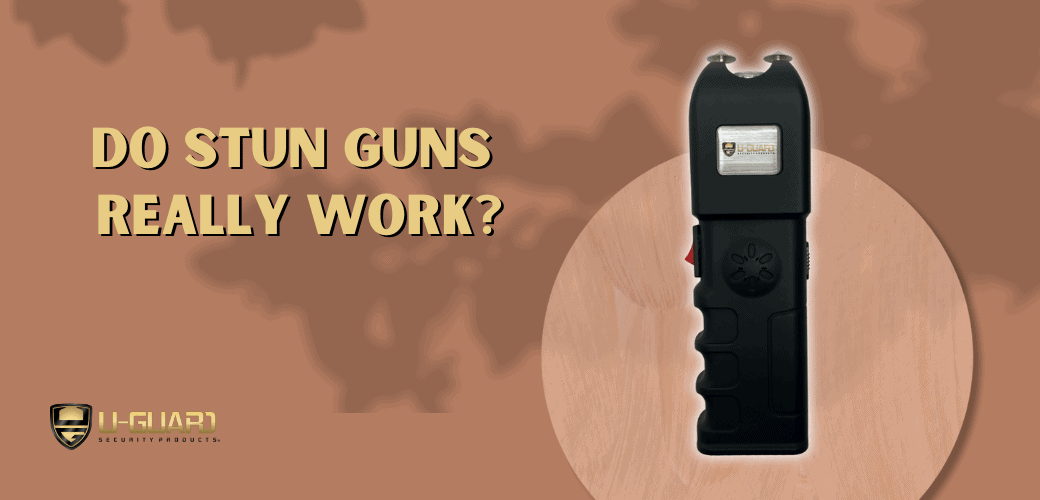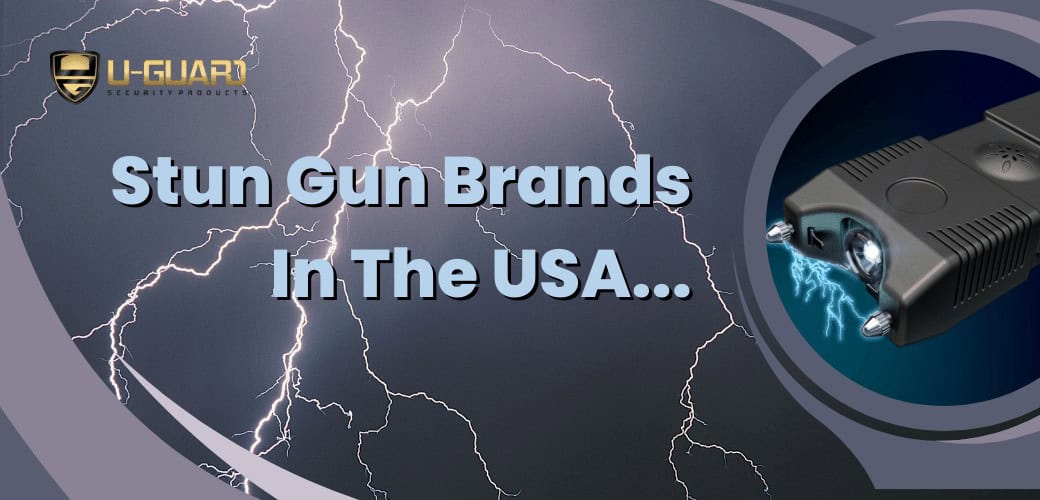Stun guns are hand-held electronic devices that emit high-voltage, low-amperage electric shocks to disable a person temporarily. When used correctly, they are intended as less-lethal self-defense weapons that can provide time for the user to escape a dangerous situation.
However, many misconceptions and questions exist about how well stun guns work in actual situations. In this guide, we will examine stun guns in depth, analyze their effectiveness, and help you understand whether they really work.
How Do Stun Guns Work?
Stun guns use electrodes to send pulsing electrical shocks into a person’s body. Inside the stun gun device is a circuit board, batteries, transformers, and capacitors that generate and regulate the electrical charge.
When the trigger is pressed, the charge builds up in the capacitors and is released in rapid, repeated electrical pulses along two exposed electrode prongs at the end of the stun gun. The prongs are usually made of metal alloy or carbon and may be fixed or collapsible. The electrodes deliver the pulsing shocks at a high voltage (typically between 20,000 to 150,000 volts) but very low amperage (usually less than 0.01 amps).
This allows the shocks to be painful and temporarily disrupt superficial muscles, but without causing fatal damage to internal organs the way high electrical currents can. Nevertheless, stun guns can still be hazardous and lethal if misused.
When the stun gun prongs contact a person’s skin or clothing, the electric pulses cause all the muscles between the contact points to contract rapidly. This contraction forces the muscles to immediately overexert themselves and quickly fatigue. The repeated contractions from additional shocks lead to muscle spasms and temporary paralysis. The intense pain and loss of muscle control cause most targets to become mentally stunned, disoriented, or dazed for several minutes. This gives the stun gun user time to get away and call for help safely.
Stun guns are designed to cause “neuromuscular incapacitation,” – where the natural electrical signals from the brain to the muscles are interrupted, making the target unable to control their body. Stun guns can’t actually “stun” the brain or central nervous system. Only the muscles closest to the point of contact are affected.
Key Factors That Impact Effectiveness
Now you know that stun guns work, several vital factors determine just how effectively a stun gun will work to incapacitate an attacker temporarily:
Electrical Output
The strength of the electrical pulses delivered by the stun gun is measured in watts or microcoulombs. Most civilian stun guns range from 1 million up to 20 million volts. However, the voltage alone doesn’t necessarily indicate the stopping power or pain compliance effectiveness.
More important is the actual amperage or microcoulombs delivered. Look for stun guns in the 10 to 20 microcoulomb range for the strongest muscle disruption. The higher electrical output makes fighting through the effects more difficult for an attacker.
Pulse Rate
The rate at which the electrical pulses are delivered also plays a role. Faster pulse rates of 15 to 20 pulses per second (PPS) tend to achieve better incapacitation compared to slower pulse rates. The repeated rapid pulses overwhelm the target’s central nervous system, causing more fantastic mental and physical disorientation.
Electrode Type
Fixed electrodes with a greater spread will deliver more stopping power than collapsible electrodes that are closer together. Large-diameter electrodes that penetrate clothing more efficiently can also improve effectiveness compared to smaller pinpoint electrodes.
Electrode Placement
The extent to which the electrodes can make contact with the attacker’s body impacts their disability. The neck, torso, and groin areas offer more stopping power when hit than extremities like hands and arms. Two contact points spread apart to allow the current to pass through more muscle groups.
Distance From Target
The closer the stun gun can be used in proximity to the attacker, the greater the intensity of the electrical shock delivered. Most civilian stun guns need to be pressed directly against the target or within an inch or two for full effectiveness. This requires getting very close to an aggressive attacker.
Target Susceptibility
The size, weight, pain tolerance, and mental determination of the target affect their reaction to a stun gun. Smaller people are often more easily incapacitated than larger attackers. People who are drunk, enraged, or on drugs may not respond as quickly to pain compliance and require prolonged or repeated shocks.
Conclusion
Stun guns can deliver intensely painful and disorienting electrical shocks that make voluntary muscle control difficult. However, their effectiveness depends greatly on sufficient electrical output, proper electrode placement, and the ability to make solid contact in stressful real-world conditions.
While stun guns do have limits, they remain a viable less-lethal self-defense option when used correctly. Select a high-powered stun gun from a reputable company, train extensively, target critical areas on the body, and be prepared to make repeated or prolonged contact. Carry a backup defensive tool as well.





